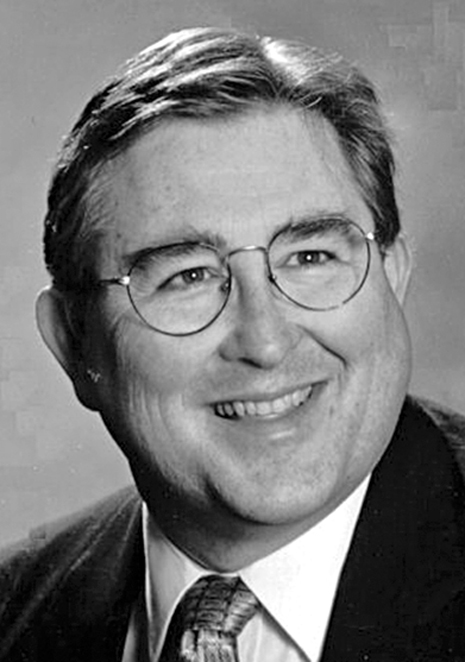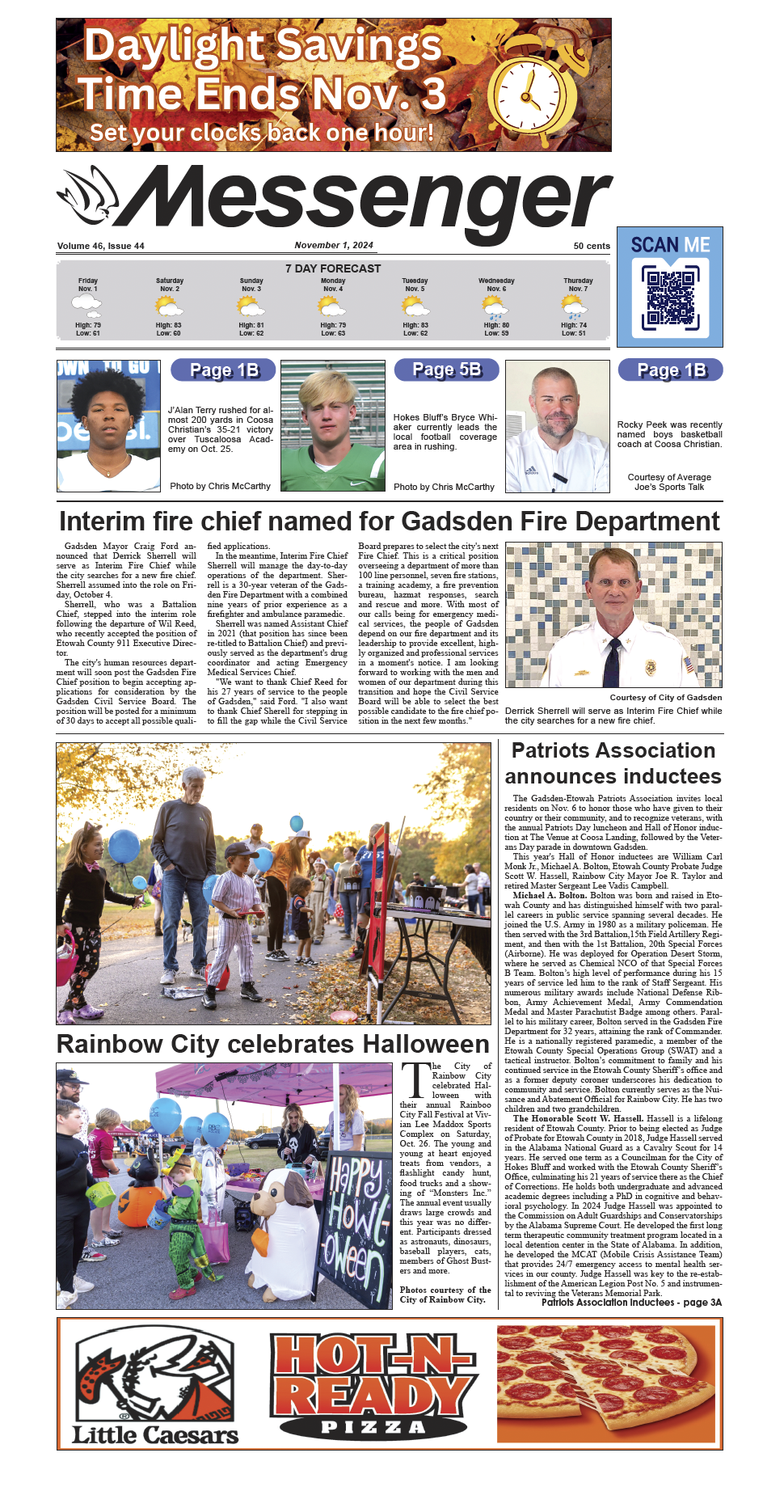By Danny Crownover
The American Civil War remains the most significant event in Alabama’s history. Tensions that had been building for decades within the United States over the issues of slavery and states’ rights came to a head in 1860. The topic of secession was in the forefront in the State of Alabama. Gadsden was a city of 400 residents that had been established only 14 years earlier in 1846.
While national politics may have seemed distant to the young and growing city, Gadsden soon found itself engulfed in the issues sweeping the nation. The Reverand John W. Potter, one of Gadsden’s prominent citizens who would be elected as a delegate to the Alabama Constitutional Convention (which became known as the Secession Convention), tried to be a voice of reason among those determined to drag the state into a war.
Of the four delegates elected by Cherokee County, three shared Rev. Potter’s disapproval of secession. It should be noted that in 1860, Gadsden was part of Cherokee County. It would not be until after the war in 1866 that an act of the state legislature would create Etowah County from lands of the six surrounding counties of Blount, Calhoun, DeKalb, Marshall, St. Clair, and Cherokee.
Those who supported secession were known as Secessionists, or “Straight-outs.” Those who opposed secession were known as Cooperationists. The split views of the Cherokee County’s delegates reflected the deep divisions that existed over the future of slavery and the direction of Southern society itself. Many whites could contemplate and even accept the eventual end of the institution, so long as there was no outside interference in the process.
The cooperationists were loyal Southerners who did not want to submit to the principles of the Republican Party and an Abraham Lincoln administration but did not want to rush into a war. They believed that the South should seek other means of resolving differences within the Union.
Sectional tensions had been brewing for the past 30 years, though there had never been political consensus among the states’ citizens as to the best plan to protect the rights of slaveholding states.
In the book The History of Etowah County, it is stated that differences were sharp between North and South Alabamians, so sharp that many feared some counties in North Alabama would attempt to attach themselves to Tennessee. With their large plantations, South Alabamians regarded slavery as an indisputable state right that merited secession to protect it. This passion was not shared by North Alabamians, since slavery was not as significant considering that valleys and foothills made large plantations unsuitable for most farmers, who, with their families, took care of chores themselves. Within Cherokee County only 18 percent of the population owned slaves.
While North Alabamians believed in states’ rights and did not support an immediate end to slavery, they resented South Alabama’s determination to lead them into a conflict that they thought could be avoided by some other method. Many Alabama Democrats favored compromise, but the more radical politicians continually tried to thwart sectional conciliation. Alabama politician William Lowndes Yancey, a leader of the Southern secession movement, had long promoted the idea that the federal government had no constitutional authority to limit a citizen’s right to hold slaves or to move with them into federal territories – the core tenet of what became known as the “Alabama Platform.” Under Yancey’s leadership, these radicals insisted that national compromise could not ensure the protection of slavery. Over time, they called more and more loudly for secession in order to ensure southern independence.
As the election of 1860 neared, more Alabamians were listening.
Now faced with the imminent prospect of a Republican president and the presumed disastrous repercussions, state legislators declared it “their solemn duty to provide in advance the means by which they might escape such peril and dishonor, and devise new securities for perpetuating the blessings of liberty to themselves and their posterity.”
In February of 1860, members of the General Assembly – the joint body of Alabama’s Senate and House – passed a vital resolution: Should a Republican win the presidential election, the governor of Alabama would be required to call a Convention of the State to discuss the preservation of Alabama’s independence; in other words, a secession convention.
Lincoln became the nominee in May, and with 40 percent of the popular vote, defeated three candidates in the November general election.
Although the electoral college would not complete its final tally until the following Feb. 13, on Dec. 6, 1860, despite pleas to the contrary from North Alabama representatives, Gov. Andrew Barry Moore, in compliance with the Resolution of the Assembly, issued his proclamation that called for the election of delegates to a convention to be held Jan. 7, 1861. On Christmas Eve, 1860, Alabama voters trudged to the polls and elected 100 statewide delegates that would take them out of the Union. Four days earlier, South Carolina had become the first state to secede from the Union.
In Cherokee County, four delegates were elected – John Potter, W.L. Whitlock, John P. Ralls and H.C. Sanford. A successful farmer-physician from Centre, Ralls was the lone secessionist.
The History of Etowah County revealed that the Reverend John Potter was born in Georgia about 1818. He came to Gadsden, probably in the late 1840s, as an educator and preacher in the Methodist Church. Possessing a love of education, Potter traveled throughout county to teach the underprivileged. In 1850, 40 pupils attended his Gadsden Academy, a log building that stood near the middle of North Sixth Street, conveniently located a spring just off Locust Street. By 1860, Potter’s reputation was well established throughout Cherokee County. His popularity was attested to the fact that he led the balloting to represent Cherokee County at the “Secession Convention.”
On Jan. 11, 1861, two days after Mississippi seceded from the Union, a vote on secession was taken. John Potter, W.L. Whitlock and H.C. Sanford voted against secession. Ralls voted for secession. There were 61 votes for secession and 39 votes against secession. Alabama seceded from the Union and soon joined the Confederate States of America, whose government was organized in Montgomery on Feb. 4, 1861. The first shots of the Civil War were fired at Fort Sumter, S.C., April 12, 1861.
Of note is that the above delegates alone decided the fate of Alabama, as the issue was never put before the people for a statewide vote. The state contributed about 120,000 men to the Confederate service, which was practically all the white population capable of bearing arms. About 10,000 slaves escaped and joined the Union army, along with 2,700 white men.
By this time, John Potter was about 43 years old. He spent most of the war teaching and preaching. Potter remained a popular citizen, and in 1866 he was elected to a seat in Alabama’s first postwar House of Representatives.
Potter’s interest in politics waned the following year when a military government was imposed on Alabama, and he never again sought public office. In 1877, Potter was selected to serve as the first headmaster of the newly-organized Gadsden School.
In 1883, some event deranged Potter’s mind, caused either by an accident in a corn crib or a brain tumor, and he was sent to Bryce Hospital in Tuscaloosa. He died on June 17, 1883, and was buried on the grounds of the hospital. Potter’s best friend, Dr. John Ralls, the lone secessionist among the Cherokee County delegates, wrote the obituary.




